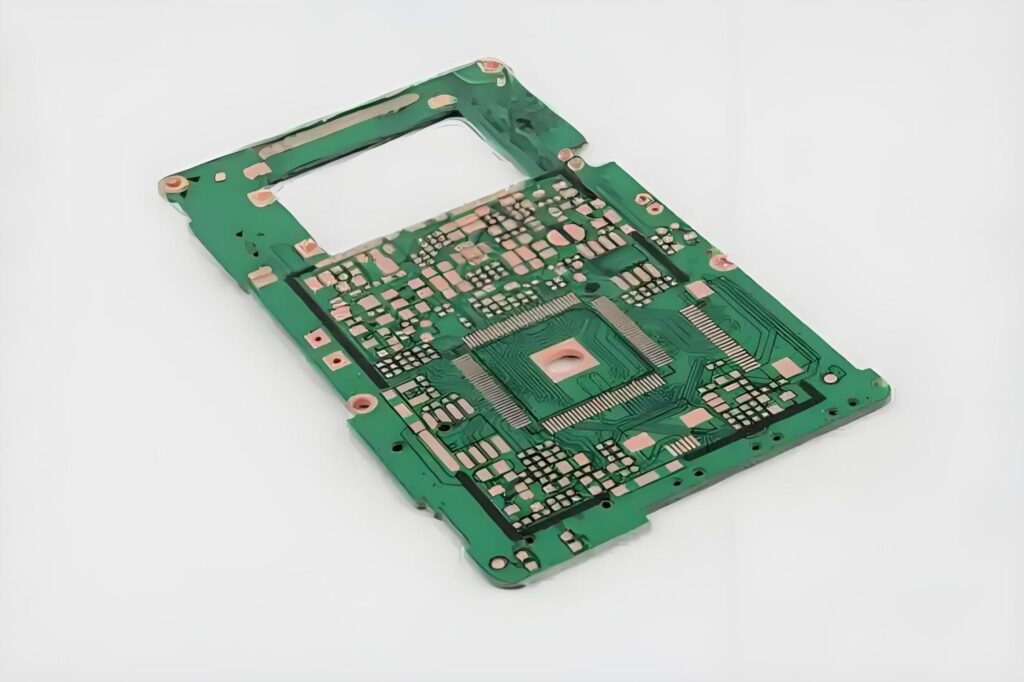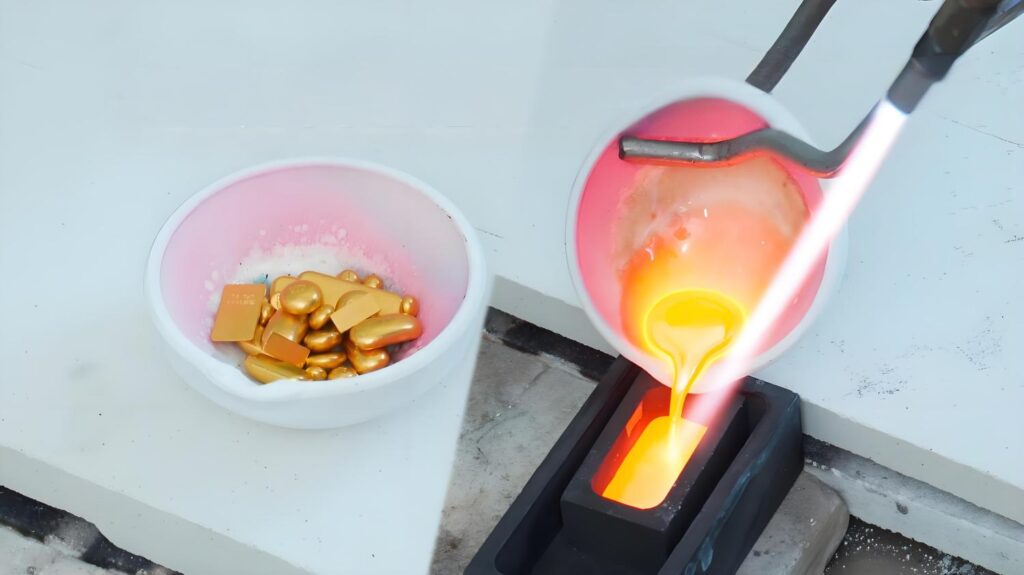What Is the Melting Point of Gold?
The melting point of gold is the temperature at which it transitions from a solid to a liquid state. For pure gold, also known as 24-karat gold, this occurs at 1,064°C (1,947°F) under standard atmospheric conditions. This relatively high melting point makes gold a stable material for various applications, as it requires significant heat to alter its form. Understanding this temperature is essential for professionals in industries like jewelry making, metallurgy, and precision machining, where gold’s behavior under heat directly impacts production processes.
Gold’s melting point is a fixed property for pure gold, but it can vary slightly when gold is alloyed with other metals. These variations are critical for industries that rely on gold’s unique characteristics, as even small changes in melting temperature can affect manufacturing techniques. For example, jewelers must carefully control heat to shape gold into intricate designs without compromising its integrity.
Importance of Gold Melting Temperature
The melting temperature of gold is not just a scientific curiosity; it plays a pivotal role in numerous industrial, technological, and economic processes. Here are some reasons why the melting point of gold holds such importance:
- Jewelry Manufacturing
In the jewelry industry, knowing the precise melting point is critical for casting gold into complex shapes and designs. Jewelers must be able to control the temperature precisely to avoid defects such as porosity, cracking, or incomplete filling of molds.
- Electronics and Electrical Engineering
Gold is an excellent conductor of electricity and is highly resistant to corrosion, making it ideal for connectors, switches, and contacts in electronic devices. The melting point of gold influences how it is applied to components, especially during the soldering and bonding processes.
- Investment and Bullion
Gold bars and coins are often melted and recast. Accurate knowledge of the melting point ensures that these processes are conducted efficiently and safely, maintaining the metal’s purity and value.
- Dental and Medical Applications
Gold’s biocompatibility makes it suitable for dental alloys and certain medical devices. Understanding its melting behavior is crucial in forming the necessary shapes and structures without compromising quality.
Melting Temperature of Different Gold Grades
Not all gold is created equal, and the melting point can vary depending on the gold’s purity or the presence of alloying metals. Gold is often mixed with other metals to enhance its strength, durability, or color, resulting in different grades, such as 24-karat, 18-karat, or 14-karat gold. Each grade has a slightly different melting point due to the influence of these additional materials.
- Pure Gold (24-Karat)
Pure gold, or 24-karat gold, has a melting point of 1,064°C (1,947°F). This is the standard for unalloyed gold, which is soft and highly malleable. Because of its purity, 24-karat gold is often used in applications where maximum conductivity or aesthetic appeal is desired, such as in high-end jewelry or gold bullion.
- 18-Karat Gold
18-karat gold consists of 75% gold and 25% other metals, such as copper, silver, or zinc. The addition of these metals lowers the melting point slightly, typically to around 926–960°C (1,700–1,760°F), depending on the specific alloy. This grade is popular in jewelry because it balances durability with the luxurious appearance of gold.
- 14-Karat Gold
14-karat gold contains 58.3% gold and a higher proportion of alloying metals. Its melting point is further reduced, often ranging from 879–926°C (1,615–1,700°F). This grade is widely used in affordable jewelry and industrial applications due to its increased strength and lower cost compared to higher-karat gold.
- Other Gold Alloys
Specialty gold alloys, such as white gold or rose gold, incorporate metals like palladium, nickel, or copper, which can further alter the melting point. For instance, white gold containing palladium may have a melting point closer to 1,000°C (1,832°F), depending on the alloy composition. These variations are crucial for manufacturers to understand when selecting materials for specific applications.
Factors Affecting the Melting Point of Gold
While the melting point of pure gold is a constant, several factors can influence the melting point of gold alloys or gold in specific conditions. These factors are critical for industries that rely on precise control of gold’s properties during processing.
- Alloying Metals
As mentioned earlier, the addition of other metals to gold can lower or, in rare cases, slightly raise its melting point. For example, copper, commonly used in rose gold, reduces the melting point, while metals like platinum may increase it slightly. The exact change depends on the proportion and type of alloying metal used.
- Impurities
Impurities in gold, such as trace elements or contaminants, can also affect its melting point. In refining processes, removing these impurities is essential to achieve the desired melting temperature and ensure consistent results. High-purity gold is often required in industries like electronics, where even minor variations can impact performance.
- Atmospheric Conditions
The melting point of gold is typically measured at standard atmospheric pressure (1 atm). Changes in pressure, such as in high-pressure environments, can slightly alter the melting point. However, these changes are minimal and usually only relevant in specialized industrial applications.
- Heating Method
The method used to heat gold can influence how efficiently it reaches its melting point. For example, induction furnaces, which use electromagnetic fields to heat metal, can melt gold more uniformly than traditional furnaces. The choice of heating method can affect the energy required and the quality of the melted gold.
Applications of Gold’s Melting Point
The melting point of gold is a critical factor in its wide range of applications. From crafting exquisite jewelry to enabling cutting-edge technology, gold’s behavior under heat makes it a versatile material in numerous industries.

- Jewelry Manufacturing
In jewelry making, gold’s melting point dictates the techniques used for casting, molding, and shaping. Jewelers melt gold to create intricate designs, often combining it with other metals to achieve desired colors or durability. Precise temperature control ensures that the gold flows smoothly into molds without burning or degrading.
- Electronics and Technology
Gold’s high melting point and excellent conductivity make it a staple in electronics. It is used in circuit boards, connectors, and microchips, where it must withstand soldering processes without melting. Gold’s reliability under heat ensures long-lasting performance in devices like smartphones, computers, and medical equipment.
- Aerospace and Defense
In aerospace, gold’s melting point allows it to be used in components exposed to high temperatures, such as satellite coatings or engine parts. Its resistance to corrosion and heat makes it ideal for extreme environments, ensuring reliability in critical applications.
- Gold Refining and Recycling
The refining and recycling of gold rely heavily on its melting point. Refiners heat gold to separate it from impurities or other metals, while recycling processes melt down old jewelry or electronics to recover pure gold. Efficient melting techniques are essential for maximizing yield and minimizing waste.
- Dentistry and Medical Applications
Gold’s biocompatibility and high melting point make it suitable for dental applications, such as crowns and fillings. Its ability to be melted and shaped with precision ensures a perfect fit for patients, while its durability guarantees long-term performance.
- Investment and Bullion
In the production of gold coins and bars, the melting point is critical for casting uniform products. Investment-grade gold must meet strict purity standards, and precise control of melting temperatures ensures that the final product is free of defects.
Safety Considerations When Melting Gold
Working with gold at its melting point requires careful safety measures. The high temperatures involved pose risks of burns, fires, or equipment damage. Proper protective gear, such as heat-resistant gloves and goggles, is essential, as is the use of specialized furnaces designed for high-temperature metals. Additionally, adequate ventilation is necessary to avoid inhaling fumes from alloying metals or impurities.
Training and expertise are also crucial. Professionals must understand the behavior of gold and its alloys under heat to prevent costly mistakes. For industries handling large quantities of gold, investing in advanced melting technologies can improve safety and efficiency.
The Future of Gold in Industry
As technology advances, the applications of gold’s melting point are likely to expand. Innovations in nanotechnology, renewable energy, and medical devices may rely on gold’s unique properties, including its high melting point and conductivity. For example, gold nanoparticles are being explored for targeted drug delivery, where precise control of melting and shaping is critical.
Sustainability is another area where gold’s melting point plays a role. As industries focus on recycling and reducing waste, efficient melting and refining processes will become increasingly important. Gold’s ability to be melted and reused without losing its properties makes it a valuable material in a circular economy.
Precionn: Your Trusted Machining Partner
At Precionn, we understand the vital role that gold and other precious metals play in modern manufacturing. While we specialize in precision machining, we also work closely with materials that require exacting thermal and structural understanding. Our advanced equipment and skilled team are equipped to handle projects that involve high-performance metals, including those where properties like the melting point of gold are critical.
Whether you are developing components for the electronics sector, designing medical tools, or creating intricate jewelry molds, Precionn provides tailored machining solutions that prioritize quality, efficiency, and reliability. We are proud to support international customers with our expertise in materials and our commitment to excellence.
For more information about our capabilities and services, visit our website or contact our team directly. Let Precionn be your partner in precision.

